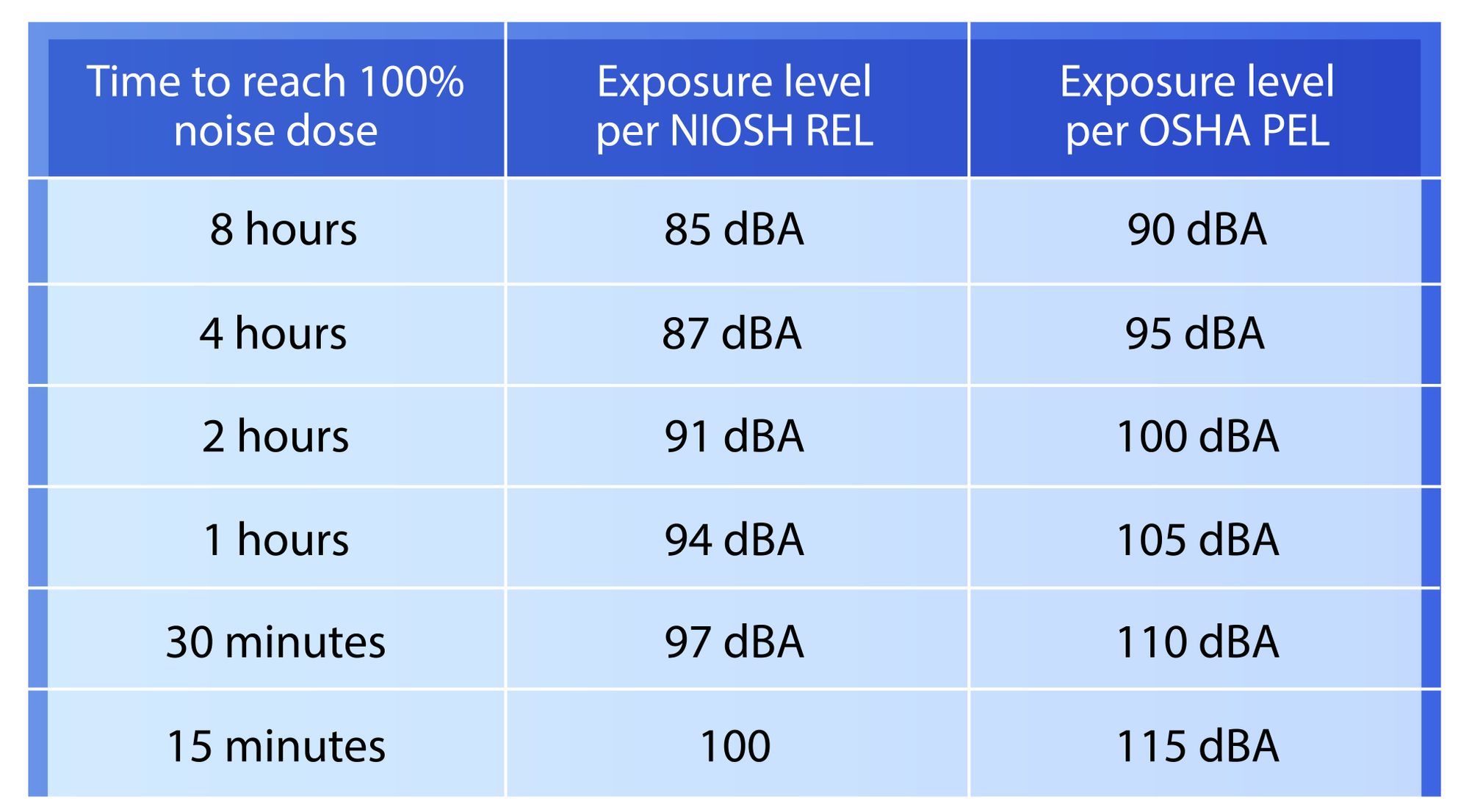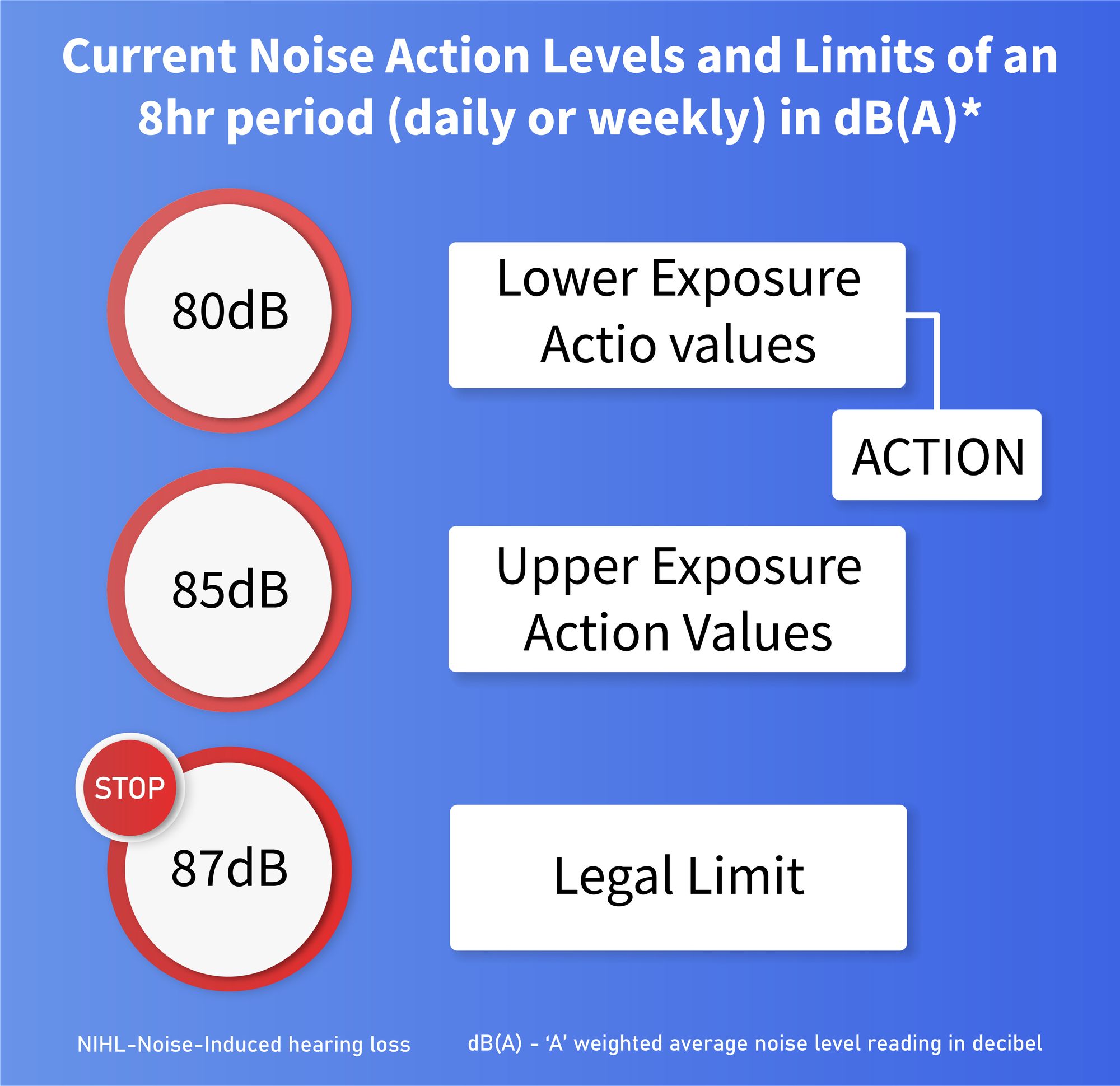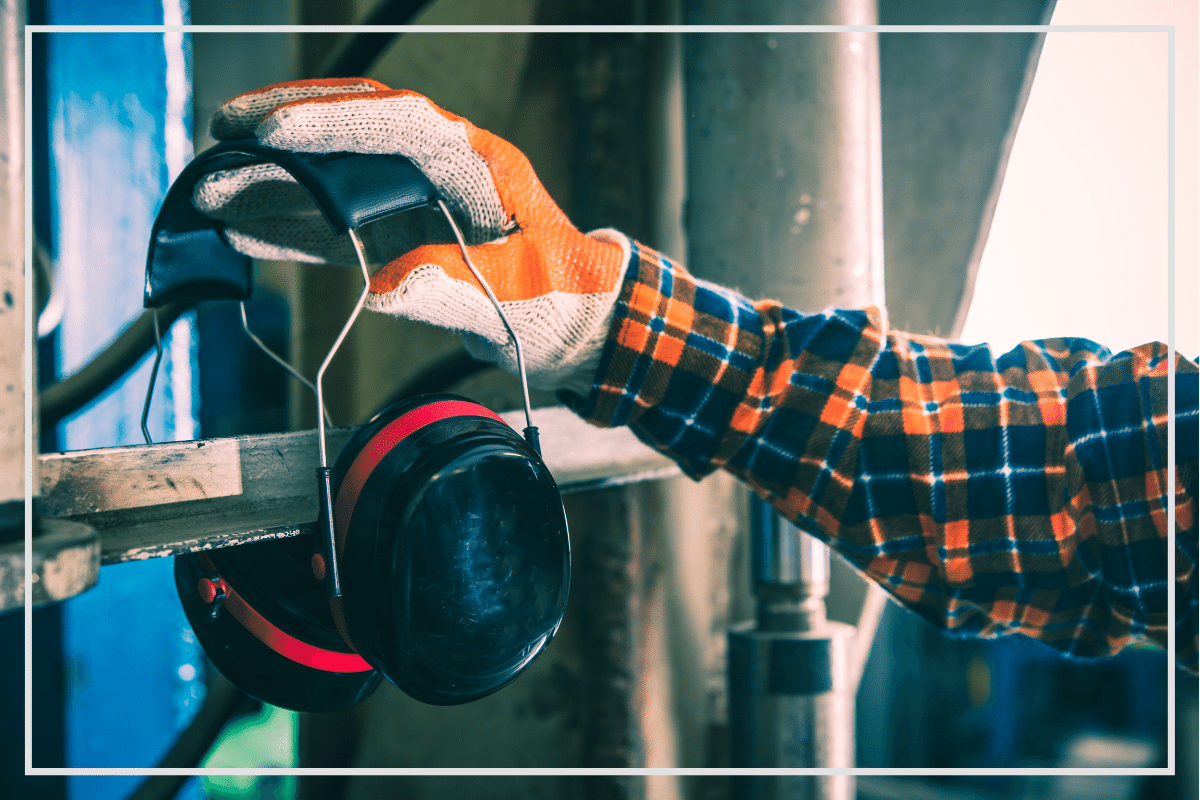- What Is A Noise Dosimeter
- The Main Features Of A Personal Noise Dosimeter
- Using Noise Dosimeters In The Workplace
3.1 Standards And Accuracy - When Should You Use It
4.1 Exposure Limits And Action Values
4.2 How To Protect Workers - What You Need To Conduct A Personal Noise Dosimeter
- Dos And Don'ts Of Noise Dosimeter
- Learn More About dB With Decibelpro.App
Noise levels in workplaces like factories, industrial plants, or construction sites can be dangerous and affect the hearing and health conditions of the workers that are exposed to them. For this reason, noise levels and exposure times must be carefully measured and monitored.
Sound level meters are traditionally used for measuring noise levels in specific locations, while noise dosimeters can accurately measure a worker’s exposure over a specific time, such as a full shift.
Read on to learn all about what a noise dosimeter is, what it’s used for, and how to use it.
What Is a Noise Dosimeter?
A noise dosimeter is a specialized sound level measuring instrument used in surveying personal noise exposures over a specific period.
The purpose of this equipment is to monitor workers’ exposure times and ensure that noisy workplaces comply with noise-related Health and Safety regulations like the 29 CFR 1910.95 Occupational Noise Exposure Standard issued by the Occupational Safety and Health Administration (OSHA), or EU Directive 2003/10/EC on noise in the workplace.
The Main Features of a Noise Dosimeter
A noise dosimeter is made up of the device itself that can be kept in a pocket or clipped to a belt and a microphone that can be clipped on the worker’s collar. Traditionally, the microphone was connected to the device using a wire. However, new badge-type dosimeters can capture the signal wirelessly and can also be worn on the shoulder or a hard hat.
Because the noise dosimeter follows a worker during an entire shift, it can measure noise levels and assess the worker’s exposure throughout their work pattern.
The results recorded on a noise dosimeter can be read directly from the meter or downloaded on a workstation. Using specialized software, you can view and analyze the time history of the noise levels.
Dosimeters can measure and provide the following parameters:
- noise dose (exposure over the given period)
- time-weighted average
- sound exposure level
- maximum and minimum sound pressure levels
- statistical data
- graphical representations of the collected data.
Noise dosimeters can also be used for area monitoring when noise levels are constant and the employees are not mobile.
Using a Noise Dosimeter in the Workplace
In the workplace, noise dosimeters are used for collecting noise level data. In turn, this data is used for monitoring compliance with health and safety regulations, for implementing noise control solutions, in legal proceedings, or for other industrial hygiene objectives.
To provide accurate data, the equipment needs to be properly calibrated and operated. A pistonphone can be used before measurement to ensure proper calibration, and regular certification of the instrument by an accredited calibration laboratory is also required.
Other important aspects that must be taken into account are the main purpose of the noise exposure measurements and the characteristics of the acoustic environment.
Standards and Accuracy
The International Electrotechnical Commission (IEC) in Geneva is the international authority that determines the technical requirements for sound level meters and dosimeters. The standards of use for this equipment are determined by the International Organization for Standardization (ISO).
In the U.S., the ANSI S1.25-1991 (R2007) standard issued by the American National Standards Institute (ANSI) sets the performance characteristics of personal noise dosimeters. They include the following parameters:
- Type 2 accuracy
- A or C frequency weighting
- Exponential averaging - F (fast) and S (slow)
- Criterion level: 90, 85, 84, 80, or V (variable)
- Duration: Hours
- Threshold level: 90, 80, or V (variable)
- Exchange rate: 5, 4, or 3
When Should You Use It?
According to organizations like OSHA and NIOSH, the recommended exposure limit for occupational noise is 85 dB over an 8-hour average. Noise levels above 80 dB may cause tinnitus, hearing damage, or noise-induced hearing loss.
When noise levels in a workplace reach or exceed these levels, employers must implement specific hearing conservation programs to prevent occupational hearing damage and hearing loss. These programs include noise-reducing solutions, protection equipment, and hearing protection training for workers.
Employers use sound level meters and noise dosimeters to determine how noisy their machinery is and what the direct noise exposure of an employee is during a workday, week, or shift. This way, they can measure and assess noise levels and determine when hearing conservation programs must be implemented.
If you work in a noisy environment and your employer is not properly monitoring noise levels to prevent hearing damage, you should consider using a personal noise dosimeter or asking your employer to perform the required measurements.
Exposure Limits and Action Values
In the US, OSHA’s permissible exposure limit (PEL) is 90 dBA calculated as a time-weighted average over an 8-hour workday. This is the legal limit on noise exposure in the workplace.
The OSHA standard also specifies that a 5 dBA exchange rate must be used. This means that any time the noise level increases by 5 dBA, the worker’s exposure to that noise level must be cut in half.
The table below shows the time it takes to reach 100% of the recommended noise dose according to OSHA and NIOSH standards:

As for action values, NIOSH recommends that employers control worker exposure before noise levels reach 85 dBA for 8 hours if they want to prevent and minimize occupational hearing damage and hearing loss.
In the UK, the Control of Noise at Work Regulations 2005 specify action values and limits that employers must follow to protect workers. For noise levels up to 80 dB, employers must take lower exposure action and above 85 dB they must take upper exposure action. The legal limit is 87 dB.

How to Protect Workers
The first step in protecting workers from loud noise and against hearing damage or loss is to monitor noise levels. The second step is to ensure hearing protection solutions and implement appropriate hearing conservation programs.
For any environments where noise levels exceed 85 dBA, workers must be provided and must wear hearing protection. Employers can also implement noise control measures such as:
- engineering controls like modifying or replacing equipment to reduce the noise level
- choosing low-noise tools and machinery
- lubricating machinery and equipment
- installing sound walls or curtains
- isolating the noise source.
- regular audiometric testing of workers
- operating noisy machines when fewer people are exposed to the noise
- limiting the time a worker is exposed to the noise source
- providing quiet areas like soundproof rooms
What You Need to Conduct a Noise Assessment with a Personal Noise Dosimeter
When using a noise dosimeter for noise measurements, make sure that the equipment is well calibrated and fitted. It should be used and fitted according to the manufacturer’s instructions and not interfere with a worker’s ability to perform their duties. Once the meter is in place, instruct the worker wearing it to carry on their work as usual. Ask them not to touch or otherwise interfere with the dosimeter’s mic or remove it.
You should also make sure that the battery life of the meter is at least double the time required for measuring.
Dos and Don’ts of Noise Dosimeters
DO
- fully charge the dosimeter before use and field calibrate it with an acoustic calibrator before and after use
- regularly perform a factory calibration of the equipment (1-2 times per year)
- use the octave band frequency analysis to choose the correct level of hearing protection
- use the audio recording function only for high noise peaks
DON’T FORGET TO
- fit the windscreen to stop air-movement noise and protect the mic
- check the dosimeter has the correct certifications especially when used in hazardous atmospheres
- take multiple sets of readings to ensure measurement accuracy
How to Use the Decibel Pro App Noise Dosimeter
Decibel Pro is a professionally calibrated sound level meter app that also includes a fully functional noise dosimeter.
To use the noise dosimeter included in the Decibel Pro app, simply download it on your iPhone or iPad. Then, select the dosimeter function and choose between the NIOSH and OSHA standards. The app will then calculate your daily noise dose according to your preferred standard and notify you when you are exceeding the recommended exposure limits.
Decibel Pro is a great tool for measuring sound levels and monitoring noise exposure that can help you safeguard your hearing health and prevent hearing damage.
To learn more about the Decibel Pro app, click here.



